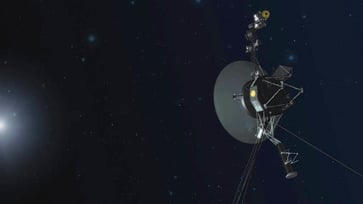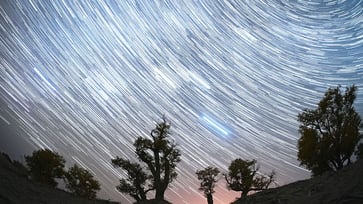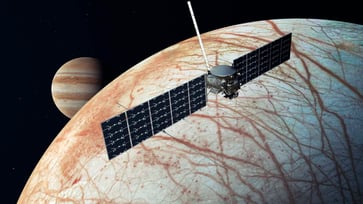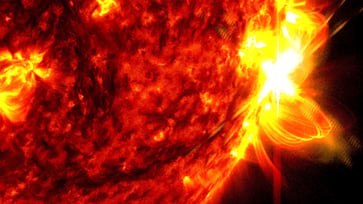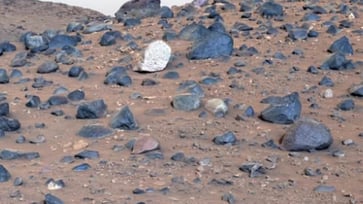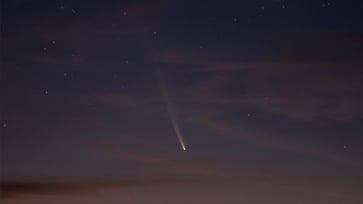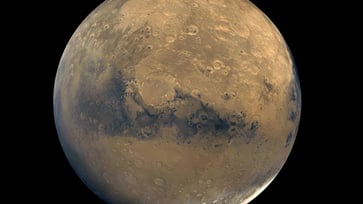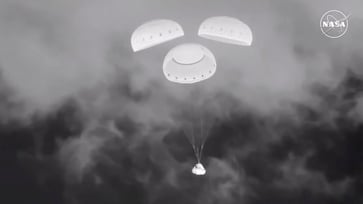Scientists claim that the most distant known galaxy has been captured by a powerful Webb Telescope.
Using the renowned space telescope, astronomers observed a Cosmic Dawn.

Scientists have observed a "Cosmic Dawn" for two years using the James Webb Space Telescope (JWST) and believe they have captured the most distant known galaxy.
The first galaxies were formed during the "Cosmic Dawn," which occurred in the initial few hundred million years following the big bang, as stated in a NASA press release.
NASA stated that the galaxies provide scientists with information about how gas, stars, and black holes evolved during the early stages of the universe.
In October 2023 and January 2024, a team of international astronomers employed the Webb telescope to observe galaxies as part of the JWST Advanced Deep Extragalactic Survey (JAMES) program.

The team gathered a record-breaking galaxy, 290 million years after the big bang, during that time.
The redshift of the most distant galaxy known was used to measure its distance from us, which is determined by how much its light has been stretched due to the expansion of the universe.
Nearly 10 hours of observation by the Near-Infrared Spectrograph (NIRSpec) of the galaxy JADES-GS-z14-0 was carried out by two astronomers on the team, Stefano Carniani from Scuola Normale Superiore in Pisa, Italy, and Kevin Hainline from the University of Arizona in Tucson, Arizona, in January 2024, as informed to NASA.

The galaxy's redshift of 14.32, detected when the spectrum was first processed, would break the record for the most distant galaxy, held by JADES-GS-z13-0, which had a redshift of 13.2.
The discovery of the spectrum was "incredibly thrilling" for the entire team due to the enigma surrounding its origin. Additionally, they emphasized that the most significant aspect of the galaxy was its luminosity from such a great distance.
The galaxy is believed to be wider than 1,600 light years, with the light source likely originating from newborn stars instead of a developing supermassive black hole.

Astronomers claim that the galaxy's starlight implies it is several hundreds of millions of times the mass of the Sun, leading to more mysteries about how it can make such a bright and massive galaxy in less than 300 million years.
The early phases of the galaxy were blue, but the color of the galaxy was reddened by dust, as astronomers discovered through data analysis.
The brightness of the source, as measured by Webb's Mid-Infrared Instrument (MIRI), was brighter than what could be predicted from the measurements of other instruments on the telescope, indicating the presence of ionized gas emission from hydrogen and oxygen.
Astronomers suggest that the presence of oxygen at an early stage implies that multiple generations of massive stars had already lived and died before the telescope could observe the galaxy.
The astronomers stated in the press release that JADES-GS-z14-0 is not like the galaxies predicted by theoretical models and computer simulations to exist in the early universe. Since the source is very bright, we can predict its growth over cosmic time. However, we have not found any suitable analogs among the hundreds of other galaxies we've observed at high redshift in our survey.
"Astronomers are likely to discover many luminous galaxies, possibly at earlier times, over the next decade with Webb, according to the team. They are excited to see the vast diversity of galaxies that existed during the Cosmic Dawn."
NASA has stated that the research findings are still under investigation and have not yet undergone peer review.
The Hubble successor, the Webb Telescope, is a joint project of NASA and the European Space Agency.
science
You might also like
- Lunar modules from the first two moon landings have been captured in stunning detail by Orbiter photos, more than 50 years after the historic missions.
- Discovery of a remarkable mastodon jaw in a New York homeowner's backyard
- NASA resumes communication with Interstellar Voyager 1 after pause.
- In 2055, the asteroid that was once referred to as Earth's "mini moon" will make a return visit.
- A new species of sea slug that resides in the ocean's 'midnight zone' has been discovered with a glowing appearance.
